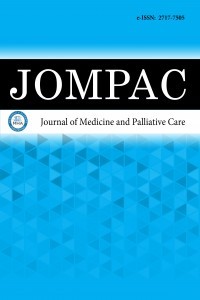1.
Linton AA, Hsu WK. a review of treatment for acute and chronicpars fractures in the lumbar spine. Curr Rev Musculoskelet Med.2022;15(4):259-271.
2.
Berger RG, Doyle SM. Spondylolysis 2019 update. Curr OpinPediatr. 2019;31(1):61-68.
3.
Sakai T, Goda Y, Tezuka F, et al. Clinical features of patients withpars defects identified in adulthood. Eur J Orthop Surg Traumatol.2016;26(3):259-262.
4.
Saifuddin A, White J, Tucker S, Taylor BA. Orientation of lumbarpars defects: implications for radiological detection and surgicalmanagement. J Bone Joint Surg Br. 1998;80(2):208-211.
5.
Goda Y, Sakai T, Sakamaki T, Takata Y, Higashino K, SairyoK. Analysis of MRI signal changes in the adjacent pedicle ofadolescent patients with fresh lumbar spondylolysis. Eur Spine J.2014;23(9):1892-1895.
6.
Sairyo K, Katoh S, Takata Y, et al. MRI signal changes of thepedicle as an indicator for early diagnosis of spondylolysis inchildren and adolescents: a clinical and biomechanical study.Spine. 2006;31(2):206-211.
7.
Labelle H, Roussouly P, Berthonnaud E, Dimnet J, O'Brien M.The importance of spino-pelvic balance in L5-s1 developmentalspondylolisthesis: a review of pertinent radiologic measurements.Spine. 2005;30(6S):S27-34.
8.
Rajnics P, Templier A, Skalli W, Lavaste F, Illés T. The associationof sagittal spinal and pelvic parameters in asymptomatic personsand patients with isthmic spondylolisthesis. J Spinal Disord Tech.2002;15(1):24-30.
9.
Fredrickson BE, Baker D, McHolick WJ, Yuan HA, Lubicky JP.The natural history of spondylolysis and spondylolisthesis. J BoneJoint Surg Am. 1984;66(5):699-707.
10.
Micheli LJ, Wood R. Back pain in young athletes. significantdifferences from adults in causes and patterns. Arch PediatrAdolesc Med. 1995;149(1):15-18.
11.
Sakai T, Sairyo K, Takao S, Nishitani H, Yasui N. Incidence oflumbar spondylolysis in the general population in Japan based onmultidetector computed tomography scans from two thousandsubjects. Spine. 2009;34(21):2346-2350.
12.
Park JS, Moon SK, Jin W, Ryu KN. Unilateral lumbar spondylolysison radiography and MRI: emphasis on morphologic differencesaccording to involved segment. AJR Am J Roentgenol. 2010;194(1):207-215.
13.
Sakai T, Sairyo K, Mima S, Yasui N. Significance of magneticresonance imaging signal change in the pedicle in themanagement of pediatric lumbar spondylolysis. Spine.2010;35(14):E641-E645.
14.
Rush JK, Astur N, Scott S, Kelly DM, Sawyer JR, Warner JrWC. Use of magnetic resonance imaging in the evaluation ofspondylolysis. J Pediatr Orthop. 2015;35(3):271-275.
15.
Saifuddin A, Burnett SJ. The value of lumbar spine MRIin the assessment of the pars interarticularis. Clin Radiol.1997;52(9):666-671.
16.
Masci L, Pike J, Malara F, Phillips B, Bennell K, Brukner P. Useof the one-legged hyperextension test and magnetic resonanceimaging in the diagnosis of active spondylolysis. Br J Sports Med.2006;40(11):940-946.
17.
Bhalla A, Bono CM. Isthmic lumbar spondylolisthesis. NeurosurgClin N Am. 2019;30(3):283-290.
18.
Cavalier R, Herman MJ, Cheung EV, Pizzutillo PD. Spondylolysisand spondylolisthesis in children and adolescents: I. Diagnosis,natural history, and nonsurgical management. J Am Acad OrthopSurg. 2006;14(7):417-424.
19.
Danielson BI, Frennered AK, Irstam LK. Radiologic progressionof isthmic lumbar spondylolisthesis in young patients. Spine.1991;16(4):422-425.
20.
Wiltse LL. The etiology of spondylolisthesis. J Bone Joint SurgAm. 1962;44(3):539-560.
21.
Legaye J, Duval-Beaupère G, Hecquet J, Marty C. Pelvic incidence:a fundamental pelvic parameter for three-dimensional regulationof spinal sagittal curves. Eur Spine J. 1998;7(2):99-103.
22.
Hanson DS, Bridwell KH, Rhee JM, Lenke LG. Correlationof pelvic incidence with low- and high-grade isthmicspondylolisthesis. Spine. 2002;27(18):2026-2029.

